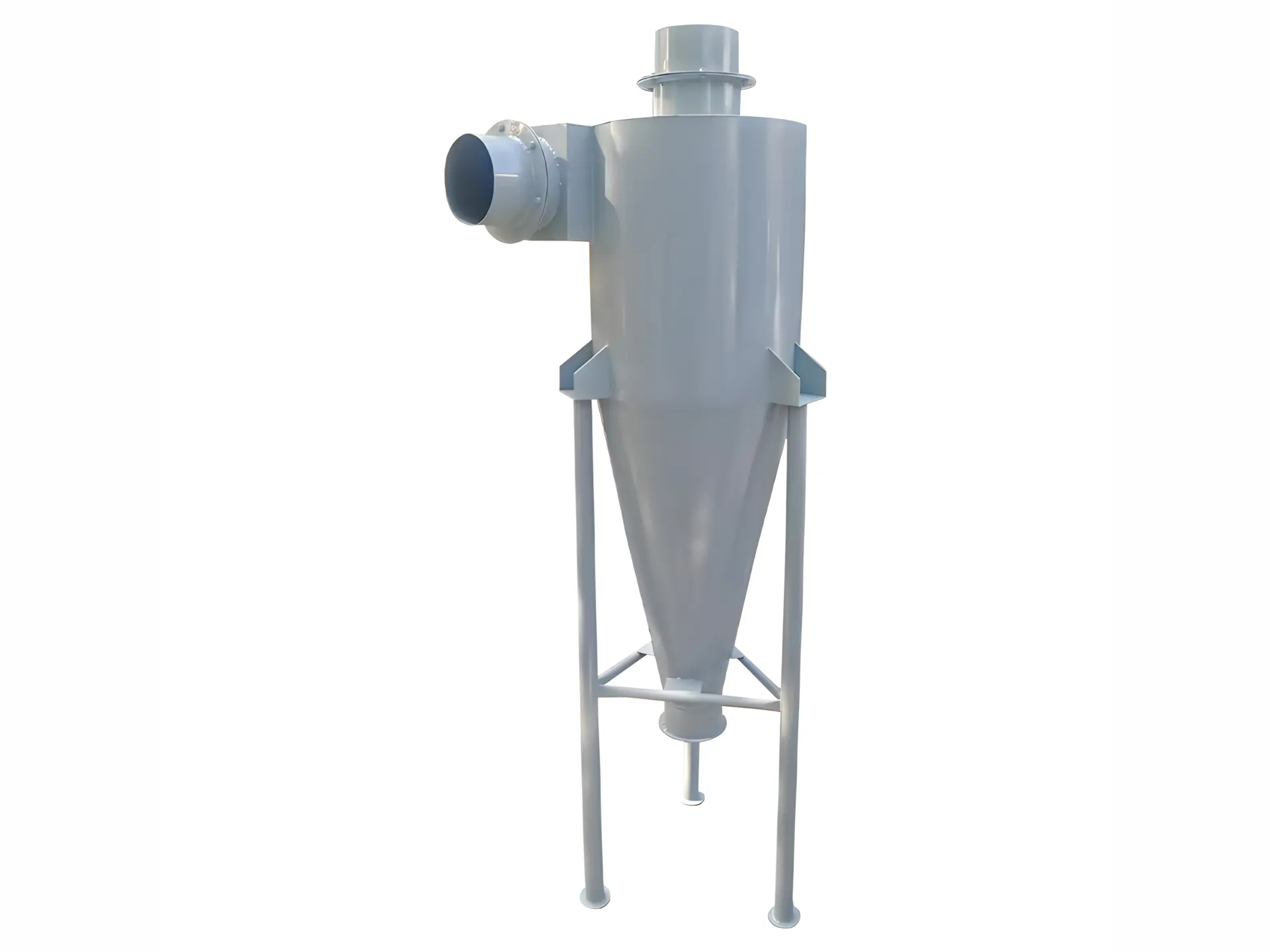Cyklonové separátory v recyklaci plastů: Klíčové mechanismy a aplikace
Cyklonové separátory jsou klíčové pro recyklaci plastů efektivní třídění a čištění materiálů využitím rozdílů v hustotě částic, jejich velikosti a dynamice proudění vzduchu. Zde je návod, jak jsou přizpůsobeny potřebám specifických pro dané odvětví:
1. Role v recyklaci plastů
Cyklony řeší dva hlavní problémy:
- Odstraňování kontaminantůOddělování prachu, nečistot, papírových štítků nebo kovů od drcených plastových vloček.
- Třídění materiáluDělení směsných plastů (např. PET vs. HDPE) na základě rozdílů v hustotě.
2. Princip fungování (specifický pro plasty)
- Tangenciální vstřikování vzduchuDrcený plast vstupuje do cyklonu a vytváří vysokorychlostní spirálu.
- Odstředivé tříděníTěžší/hustší materiály (např. PVC, kovy) jsou tlačeny ke stěnám a padají do sběrné násypky.
- Obnova lehkých materiálůLehčí plasty (např. PP fólie, prach) stoupají přes vnitřní vír a vycházejí přes vyhledávač vírů.
- Vícestupňové systémyČasto se používá v kombinaci se síty nebo elektrostatickými separátory pro vyšší čistotu.
3. Klíčové aplikace
- Čištění po skartaciOdstraňování nečistot, jako je písek nebo lepidlo, z plastových vloček.
- Peletizační linkyOdsávání prachu a jemných částic během extruze pro zlepšení kvality pelet.
- Třídění na základě hustotyOddělování PET (1,38 g/cm³) od HDPE (0,95 g/cm³) ve směsných proudech.
- Recyklace fólieIzolace lehkých LDPE fólií od tuhých fragmentů.
4. Výhody recyklace plastů
- Nákladová efektivitaNízká spotřeba energie a žádné spotřební materiály (např. filtry).
- TrvanlivostOdolává abrazivním plastům, jako je drcený ABS nebo PVC.
- ŠkálovatelnostModulární konstrukce jsou vhodné pro malé nebo průmyslové závody.
- Suchý procesSnižuje spotřebu vody ve srovnání s hydrocyklony.
5. Omezení a řešení
- Podobné problémy s hustotouObtížné oddělení PP (0,9 g/cm³) od LDPE (0,92 g/cm³).
- ŘešeníKombinujte s NIR (blízkoinfračervenými) třídiči nebo flotačními nádržemi.
- Limity jemných částicMůže unikat prach o velikosti menší než 100 µm.
- ŘešeníPřidejte sáčkové filtry nebo elektrostatické odlučovače.
6. Konstrukční aspekty
- Optimalizace vstupní rychlostiVyvažuje účinnost separace (15–25 m/s) s náklady na energii.
- Geometrie násypkyZabraňuje opětovnému vstupu lehkých plastů do proudu vzduchu.
- Konfigurace specifické pro materiál:
- Pevné plastyVětší cyklony pro objemový průtok.
- Fólie/vláknaVysokorychlostní cyklony zabraňují ucpávání.
7. Dopad na odvětví
- Zvýšení čistotyCyklony zvyšují kvalitu recyklovaného plastu a splňují normy pro opětovné použití v potravinářské kvalitě.
- Snižování odpaduZíská více než 951 t použitelného materiálu, čímž se minimalizuje závislost na skládkách.
- Úspory energieNižší provozní náklady oproti mokrému praní nebo ručnímu třídění.
Závěr
V recyklaci plastů jsou cyklonové odlučovače obrana první linie pro odstraňování kontaminantů a třídění materiálů. I když jsou omezené na jemné nebo hustotně podobné plasty, jejich jednoduchost a nákladová efektivita je činí nepostradatelnými ve vícestupňových recyklačních systémech. Spojení cyklonů s pokročilými technologiemi (např. třídiče s umělou inteligencí, elektrostatická separace) zajišťuje vysoce čistý výstup a posouvá oběhové hospodářství vpřed.



